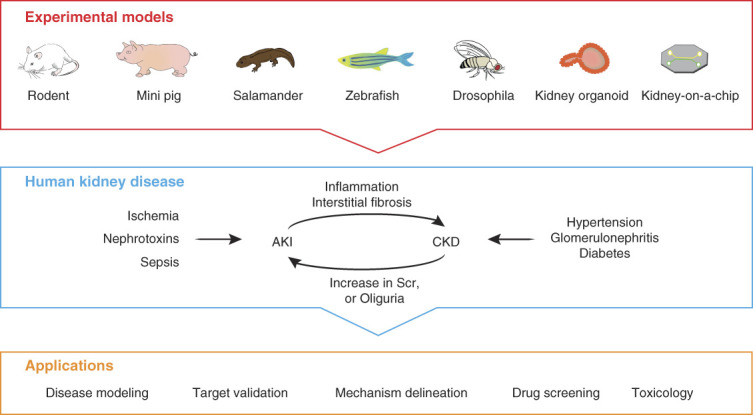Figure 1.

Schematic presentation of commonly used experimental models of kidney diseases and their applications. The experimental models used to study human kidney disease are diverse in species. Rodent models remain to be the mainstay of experimental approaches in nephrology and have a profound effect on kidney disease modeling, target validation, mechanism delineation, potential drug discovery, and toxicology evaluation. Although rodent models dominate kidney research, the use of large animals, such as mini pigs or simple and humanized models such as salamander, zebrafish, drosophila, human-derived kidney organoids, and kidney-on-a-chip, can also provide important insights into the pathogenesis of kidney disease and enable high-throughput screening for therapeutics to prevent and treat human kidney disorders. SCr, serum creatinine.
